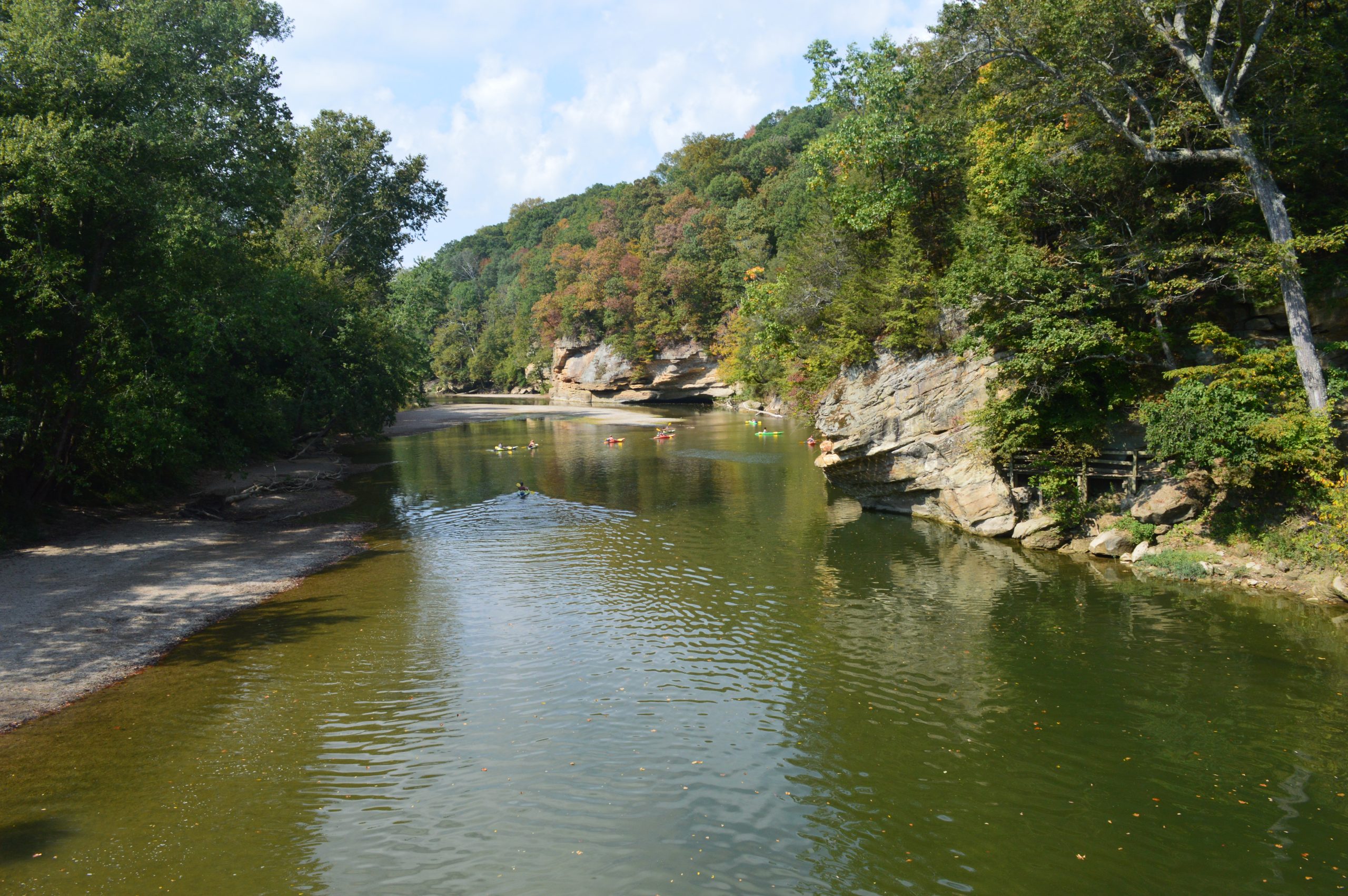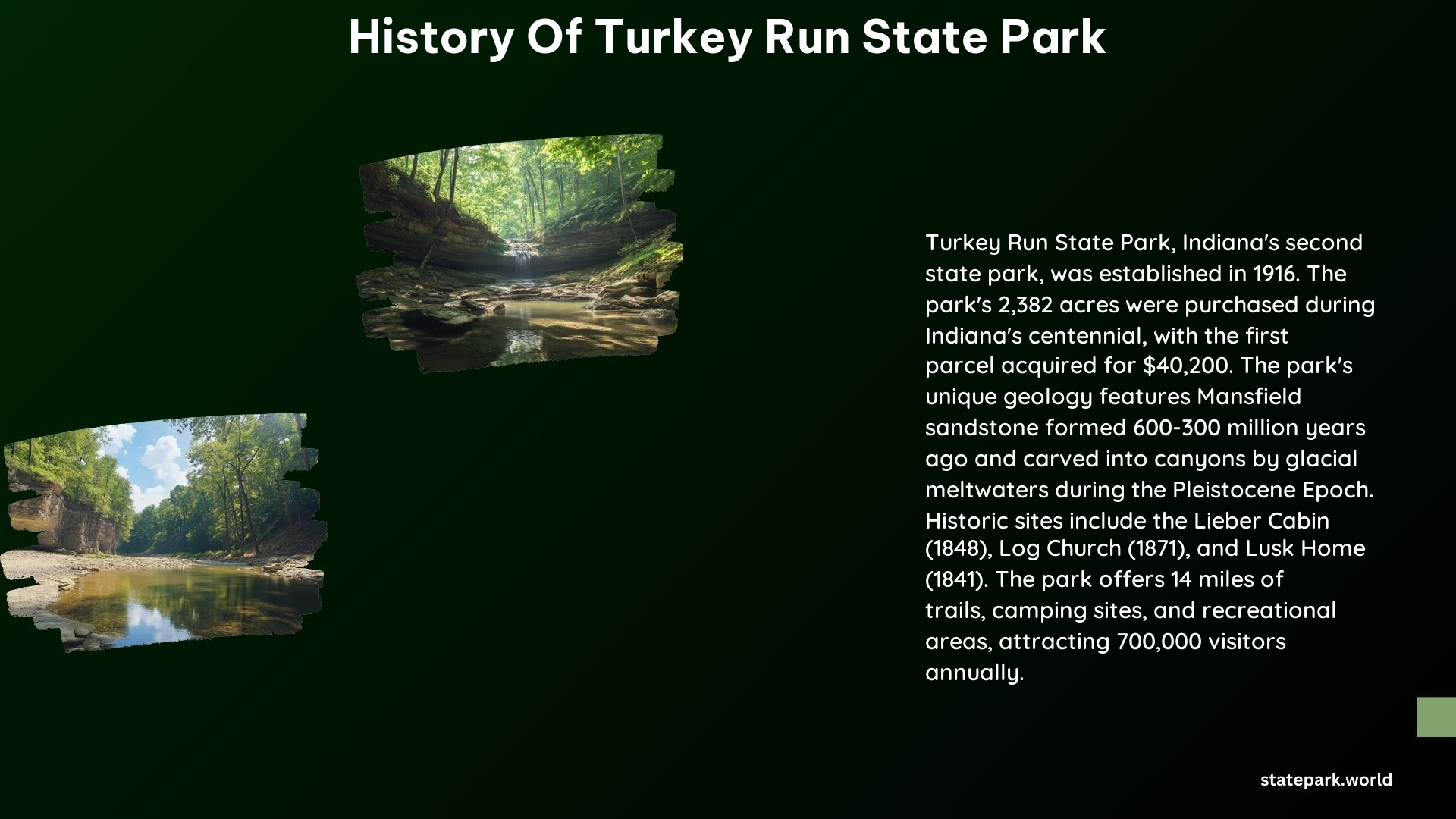Turkey Run State Park, located in Parke County, Indiana, is a unique and beautiful destination that offers a glimpse into the state’s rich history and natural wonders. The park was established in 1916, marking the beginning of Indiana’s state park system.
Establishment and Early Development

- 1916: The first parcel of land for Turkey Run State Park was purchased during Indiana’s centennial, making it the second state park in Indiana after McCormick’s Creek State Park.
- Richard Lieber: Lieber played a crucial role in the establishment of Turkey Run State Park. He negotiated with the Hoosier Veneer Company to purchase the land for $40,200 after the company acquired it at auction in 1916. Lieber’s efforts were instrumental in securing the land for the state park system.
- Juliet Strauss: Strauss, a local newspaper and magazine columnist, contributed to the preservation of Turkey Run by writing a letter to the Indiana Historical Commission in 1915, highlighting the importance of saving the area from logging and development. Her efforts helped raise awareness and support for the park’s establishment.
Historic Sites and Features

- Lieber Cabin: The Lieber Cabin, built in 1848, is the oldest of its kind in Indiana. It was moved to the park in 1918 and now serves as a log cabin museum, commemorating Lieber’s contributions to Indiana State Parks.
- Log Church: The Log Church, originally constructed in 1871, was moved to the park and rededicated in 1923. It stands as a reminder of the religious heritage of the area and still hosts non-denominational services on Sundays during the warmer months.
- Colonel Lieber Memorial: A memorial dedicated to Richard Lieber, recognizing his contributions to Indiana State Parks.
- Lusk Home and Mill Site: The Lusk Home and Mill Site, built by Captain Lusk in 1825, is a historic site within the park. The home was completed in 1841 and is now open for seasonal tours.
Geology and Natural Features
- Sandstone Gorges: The park’s unique landscape was formed over 300 million years ago through the deposition of sandstone by ancient rivers. The Wisconsin Glacier’s melting water carved out the canyons during the Ice Age.
- Mansfield Sandstone: The exposed bedrock in the park is Mansfield sandstone, named after Mansfield, Indiana. This type of sandstone was formed during the Carboniferous Period.
- Potholes and Erratics: The park features potholes, such as the Punch Bowl on Trail 3, which were scoured out by glacial erratics caught in swirling backwash. Erratics are pieces of bedrock from Canada carried by the glaciers.
Park Facilities and Activities
- Trails: The park has over 14 miles of scenic trails, including Trail 6, which features the Lieber Cabin, and Trail 3, which passes through the Punch Bowl.
- Camping: The park offers camping sites, with facilities available at a fee.
- Turkey Run Inn: The Turkey Run Inn was built in 1919 and offers accommodations for visitors.
Preservation and Recognition
- National Register of Historic Places: The Lusk Home and Mill Site, the Richard Lieber Log Cabin, and the park itself have been listed on the National Register of Historic Places in 1974, 2001, and 2019, respectively.
- Annual Visitors: The park attracts around 700,000 visitors each year.
Turkey Run State Park’s rich history, unique geology, and diverse attractions make it a must-visit destination for nature enthusiasts and history buffs alike.
References:
– Turkey Run State Park Historic Sites
– Turkey Run State Park Geology
– Turkey Run State Park History
